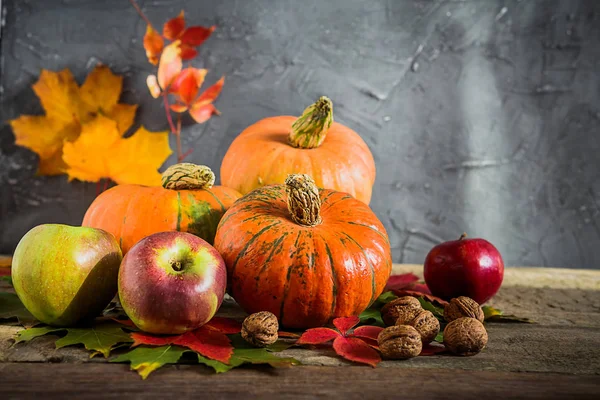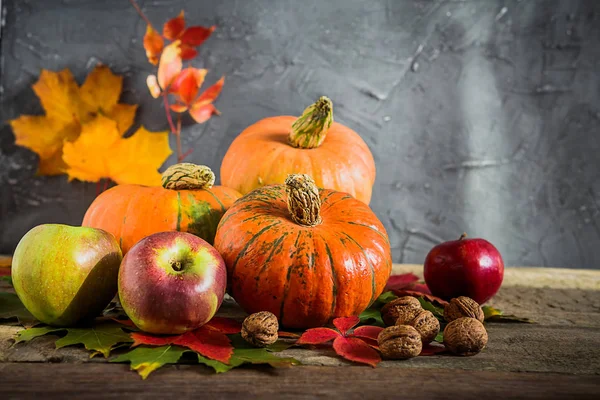Discover the Benefits and Drawbacks of Organic vs. Conventional Autumn Fruits and Vegetables for Your Well-being. “Amplifying Your Nutritional Intake with Autumn Harvest” The arrival of autumn isn’t just marked by cooler breezes and the leaves painting the landscape in hues of amber and ruby. It also heralds a season rich with an array of fruits and vegetables that can be a significant boon to your health. As nature dresses in its fall colors, we’re presented with an opportunity to enrich our diets with an abundance of vital nutrients, including vitamins, minerals, and antioxidants. In this article, we’re going to dive into the bountiful world of autumn harvests and uncover how these seasonal treasures can be instrumental in boosting your nutritional health.

The Autumn Harvest Unveiled
With the onset of autumn, as the days shorten and the air grows chillier, our eating habits naturally shift to complement the season. A variety of fresh, local, and seasonal fruits and vegetables become readily accessible. This isn’t merely a coincidence but nature’s way of supplying us with the necessary nutrients to meet our body’s changing needs throughout the year. Let’s explore some of the standout fruits and vegetables of autumn that can help take your nutrition to the next level.
1. Pumpkins: A Nutrient-Rich Powerhouse
Take the pumpkin, for example, often celebrated in the context of Halloween but far beyond just a festive decoration. This brightly colored vegetable is packed with essential nutrients, including vitamins A and C, potassium, and dietary fiber. Its vivid orange color is a telltale sign of its rich antioxidant content, which plays a critical role in fighting oxidative stress in the body. Adding pumpkin to your diet can boost your immune system and support healthy skin. Whether roasted, pureed, or added to soups and stews, pumpkin offers both delicious and nutritious benefits.
2. Sweet Potatoes: The Fiber-Filled Delight
Sweet potatoes are a fall favorite known for their delightful sweetness and distinct orange color. They are a rich source of dietary fiber, which aids in digestion and keeps you feeling full. Moreover, sweet potatoes provide an abundance of vitamins A and C, essential for maintaining strong immunity and promoting clear, radiant skin. Enjoy them roasted, mashed, or even as a base for savory dishes like sweet potato casseroles.
3. Cranberries: Tart Elegance in a Berry
Cranberries add a touch of tartness and elegance to your autumn menu. These tiny, jewel-toned fruits are renowned for their ability to combat urinary tract infections due to their high proanthocyanidin content. Beyond their urinary benefits, cranberries offer a healthy dose of vitamin C and fiber. You can enjoy them in sauces, compotes, or as a delightful addition to your salads.
4. Apples: Crisp and Nutrient-Packed
Apples are synonymous with fall and come in a delightful array of varieties. These crisp and juicy fruits are brimming with fiber, particularly in their skin, which can aid in digestive regularity. Apples are also known for their phytochemical content, including quercetin, which has potent antioxidant properties. Snack on them, slice them into salads or bake them into heartwarming pies.
5. Brussels Sprouts: Mini Cabbage Marvels
Brussels sprouts, often regarded with mixed emotions, are a nutritional marvel. These miniature cabbages pack a powerful punch of vitamins K and C, both vital for bone health and immune support. Brussels sprouts are also a good source of glucosinolates, compounds that may help reduce the risk of certain cancers. Roasting them with a drizzle of olive oil and a dash of sea salt can transform them into a savory delicacy.
6. Butternut Squash: A Source of Versatility
Butternut squash, with its pale beige exterior and vibrant orange flesh, is a versatile ingredient for fall recipes. It’s packed with vitamins A and C, which can help keep your skin healthy and boost your immune system. The deep color of butternut squash signals its rich carotenoid content, compounds that are well-known for their antioxidant properties. Use it to create creamy soups, add it to pasta, or roast it for a sweet and savory side dish.
A Dietitian’s Perspective: Maximizing Nutritional Gains
To gain deeper insights into the benefits of incorporating fall produce into our diets, we spoke with Jane Smith, a seasoned Registered Dietitian (RD). She emphasized the importance of seasonal eating and the remarkable advantages of fall produce.
“Seasonal produce offers a unique opportunity to optimize your nutrition,” says Smith. “Nature has an innate wisdom in providing foods that align with our needs at specific times. Fall produce is no exception, offering an array of nutrient-rich options.”
Smith also points out that the consumption of seasonal produce allows individuals to connect with local agriculture, supporting sustainability and reducing the carbon footprint associated with long-distance food transportation.
Key Nutritional Benefits:
- Vitamins and Minerals: Fall produce is a treasure trove of vitamins like A and C, both of which play vital roles in immune health, vision, and skin maintenance. The carotenoids found in many fall vegetables, such as pumpkins and butternut squash, contribute to their vibrant colors and powerful antioxidant capabilities.
- Fiber: Many fall favorites, including sweet potatoes and apples, are high in dietary fiber. This nutrient aids in digestion, promotes a feeling of fullness, and supports heart health.
- Antioxidants: The wide range of colors found in fall produce is indicative of their antioxidant content. These compounds help protect your cells from oxidative damage, reducing the risk of chronic diseases.
- Phytochemicals: Fruits like apples are rich in phytochemicals, which are natural compounds that have been associated with a lower risk of chronic conditions such as heart disease and cancer.
Smith underscores the versatility of these seasonal ingredients. “You can create a colorful, nutrient-rich plate by incorporating a variety of fall produce into your meals,” she advises. “Experiment with different cooking methods, from roasting to steaming, to unlock their flavors and nutritional potential.”
The Art of Seasonal Cooking
To make the most of your fall produce, it’s crucial to master the art of seasonal cooking. Here are some delectable and nutritious recipes that showcase the splendor of fall produce.
1. Roasted Brussels Sprouts with Balsamic Glaze
Ingredients:
- 1 pound Brussels sprouts
- 2 tablespoons olive oil
- 2 tablespoons balsamic vinegar
- 1 teaspoon honey
- Salt and pepper to taste
Instructions:
- Preheat your oven to 400°F (200°C).
- Trim the ends of the Brussels sprouts and cut them in half.
- Toss the sprouts in olive oil, salt, and pepper. Place them on a baking sheet.
- Roast for 20-25 minutes or until they’re tender and slightly crispy.
- While they’re roasting, whisk together the balsamic vinegar and honey.
- Drizzle the balsamic glaze over the roasted Brussels sprouts before serving.
2. Butternut Squash Soup
Ingredients:
- 1 medium-sized butternut squash, peeled and cubed
- 1 onion, chopped
- 2 cloves of garlic, minced
- 4 cups vegetable broth
- 1 teaspoon ground cinnamon
- Salt and pepper to taste
- 2 tablespoons olive oil
Instructions:
- In a large pot, heat the olive oil over medium heat.
- Add the chopped onion and garlic and sauté until fragrant and translucent.
- Add the cubed butternut squash, ground cinnamon, and vegetable broth. Bring to a boil.
- Reduce the heat and simmer for 20-25 minutes, or until the squash is tender.
- Use an immersion blender to puree the soup until smooth.
- Season with salt and pepper to taste and serve hot.
3. Apple and Cranberry Salad
Ingredients:
- 2 cups mixed greens
- 1 apple, thinly sliced
- 1/2 cup dried cranberries
- 1/4 cup feta cheese
- 1/4 cup candied pecans
- Balsamic vinaigrette dressing
Instructions:
- In a large salad bowl, combine the mixed greens, apple slices, dried cranberries, feta cheese, and candied pecans.
- Drizzle the salad with your favorite balsamic vinaigrette dressing.
- Toss to combine and enjoy a burst of fall flavors.
The Seasonal Approach to a Healthy Lifestyle
Incorporating fall produce into your diet isn’t just about nutrition; it’s about embracing a holistic, seasonal approach to a healthier lifestyle. The advantages extend beyond the dining table. By enjoying nature’s offerings in their peak seasons, you’re supporting local farmers, reducing environmental impact, and nurturing a sense of connection with the changing world around you.
Frequently Asked Questions
What Are the Best Fall Produce Items for Boosting Nutrition?
Fall is a bountiful season for nutritious produce. Top items include apples, pears, pumpkins, sweet potatoes, Brussels sprouts, kale, and squash. These items are not only versatile in cooking but also rich in vitamins, minerals, and fiber, helping to support overall health.
How Can I Incorporate More Fall Produce into My Diet?
- Make soups and stews: Use items like butternut squash, carrots, and kale to create hearty dishes.
- Bake with them: Apples and pears can be used in healthy baked goods or roasted for a sweet side dish.
- Salads: Incorporate roasted vegetables such as Brussels sprouts or sweet potatoes into salads for added nutrition and flavor.
- Snacks: Fresh apples or pear slices are great snacks. Pumpkin seeds toasted with a little salt can be a delicious and nutritious snack option as well.
Are There Any Nutritional Benefits of Pumpkin That Might Surprise Me?
Yes, pumpkins are not just for carving! They are a low-calorie food rich in vitamins A and C, fiber, and potassium. Pumpkins can support immune health, eye health, and can even contribute to skin health thanks to their vitamin A content.
What Are Some Easy Ways to Prepare Sweet Potatoes?
- Baked or Roasted: Simply baking or roasting sweet potatoes can bring out their natural sweetness.
- Mashed: Mashed sweet potatoes with a hint of cinnamon and nutmeg can be a flavorful side dish.
- Sweet Potato Toast: Slice sweet potatoes lengthwise and toast them for a healthy, gluten-free alternative to bread.
Can Eating Seasonally Benefit My Health?
Yes, eating seasonally can benefit your health. Seasonal produce is fresher, more nutritious, and often has a better taste compared to out-of-season fruits and vegetables. It is also a great way to support local agriculture and reduce your carbon footprint.
How Can I Store Fall Produce Properly to Extend Its Shelf Life?
- Apples: Store in a cool, dark place, or in the fridge if you want them to last longer.
- Root Vegetables: Keep in a cool, dark, and well-ventilated area. Do not wash them before storage to minimize rot.
- Leafy Greens: Wrap in a damp cloth and store in the fridge to keep them fresh.
- Squash: Store in a cool, dark place with good air circulation.
What Are Some Simple, Healthy Fall Breakfast Ideas?
- Pumpkin Oatmeal: Add pureed pumpkin and a sprinkle of cinnamon to your morning oatmeal.
- Apple Cinnamon Yogurt Parfait: Layer Greek yogurt with chopped apples, a dash of cinnamon, and granola for a quick breakfast.
- Sweet Potato Hash: Combine cooked sweet potatoes with onions, peppers, and your favorite spices for a savory start to your day.







1 comment
Comments are closed.